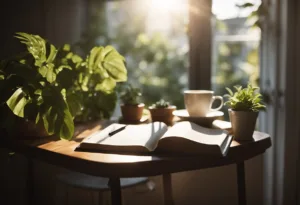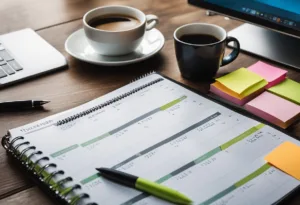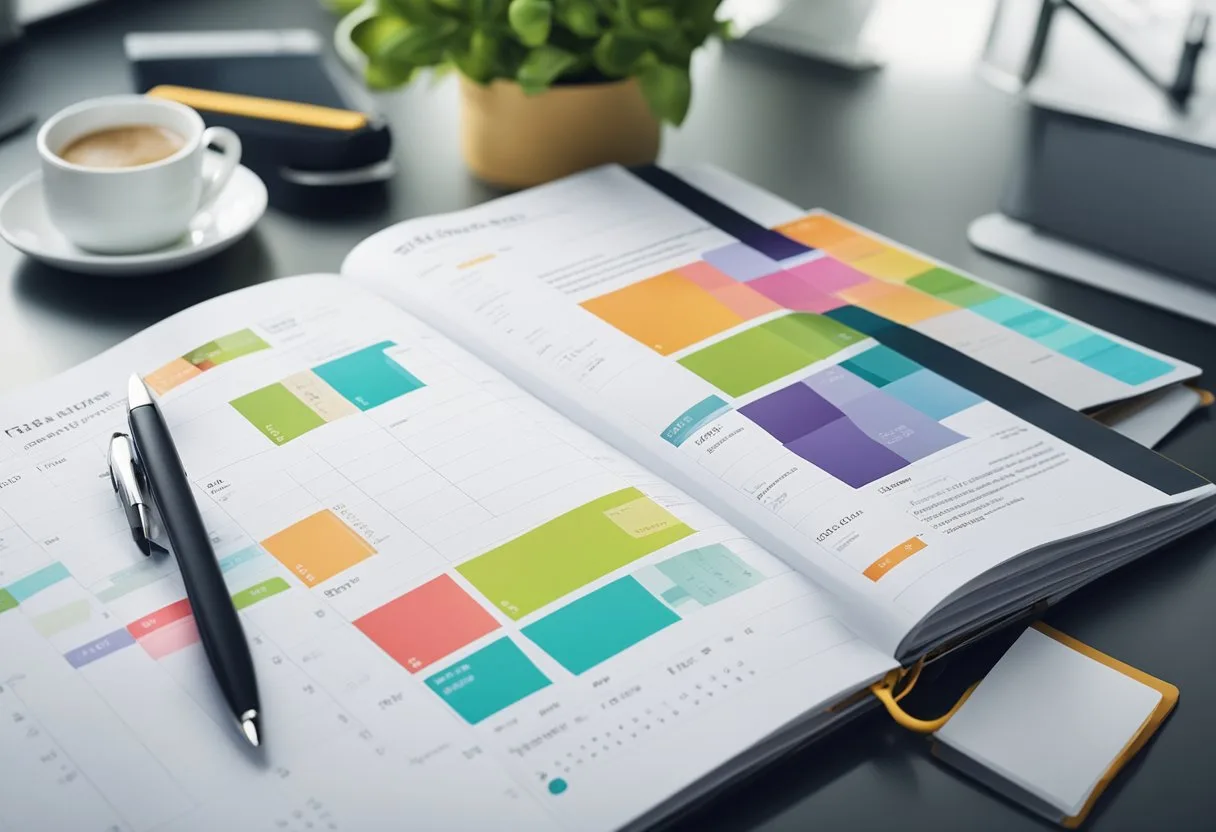Planning can be a daunting task, especially for beginners. However, with the right planner ideas, beginners can easily get organized and stay on top of their daily tasks. A planner is a powerful tool that helps individuals keep track of their schedules, set goals, and prioritize tasks. In this blog post, I will share with you 35 simple and easy planner ideas for beginners to help you get started on planning your daily life. When it comes to planner ideas for beginners, it is essential to start with the basics. One of the first steps is to choose the right planner that suits your needs and style. The planner should be easy to use, and the layout should be simple and straightforward..
Another important planner idea for beginners is to set achievable goals. Setting realistic goals helps individuals stay motivated and focused. They can break down their goals into smaller tasks and prioritize them based on their importance. They can use the planner to track their progress and make adjustments as necessary. With the right planner ideas, beginners can easily get organized and stay on top of their daily tasks.
Choosing the Right Planner
Choosing the right planner is essential for beginners to ensure that they can keep track of their tasks and schedule. There are various types of planners available in the market, each with unique features and benefits. In this section, we will discuss the different types of planners, size and portability, and customization options to help beginners choose the right planner.
Types of Planners
There are several types of planners available, including daily, weekly, monthly, and yearly planners. Daily planners are ideal for those who have a lot of tasks to complete each day, while weekly planners are suitable for those who prefer to plan their tasks on a weekly basis. Monthly planners are perfect for those who want to plan their tasks for an entire month, and yearly planners are ideal for those who want to set long-term goals and plan accordingly.
Size and Portability
The size and portability of a planner are essential factors to consider when choosing a planner. A planner that is too large may be inconvenient to carry around, while a planner that is too small may not have enough space to write down all the necessary details. It is recommended to choose a planner that is portable and can fit in your bag or purse.
Customization Options
Customization options are another crucial factor to consider when choosing a planner. Many planners come with customizable covers, dividers, and inserts, allowing users to personalize their planners to their liking. Some planners also come with stickers, washi tape, and other decorative elements to make planning more fun and engaging.
Choosing the right planner is essential for beginners to stay organized and productive. By considering the types of planners, size and portability, and customization options, beginners can select a planner that suits their needs and preferences.
Setting Up Your Planner

When setting up a planner, there are a few things to consider to ensure that it works effectively. A good planner should be tailored to the user’s needs and preferences, and it should be easy to use and navigate. Here are some tips for setting up a planner for beginners:
Yearly Overview
A yearly overview is an important part of a planner because it allows the user to see the big picture and plan for long-term goals. This section should include important dates such as birthdays, anniversaries, and holidays, as well as any other significant events or deadlines. A table or calendar format can work well for this section.
Monthly and Weekly Layouts
Monthly and weekly layouts are essential for keeping track of appointments, meetings, and other scheduled events. The monthly layout should include an overview of the entire month, while the weekly layout should provide more detail for each week. It is important to include enough space for notes and reminders in these sections, and to make them easy to read and navigate. A table or bullet point list can work well for this section.
Daily Task Sections
A daily task section is where the user can write down their to-do list for each day. This section should be organized in a way that makes it easy to see what needs to be done and when. It can be helpful to prioritize tasks and assign deadlines to ensure that everything gets done on time. A bullet point list or table can work well for this section.
By following these tips, beginners can set up a planner that works effectively for their needs and preferences. With a well-organized planner, it is easier to stay on top of tasks and make progress towards long-term goals.
35 Planner ideas for beginners

- Daily To-Do List: Begin by listing tasks in order of priority for each day.
- Weekly Meal Planning: Start by outlining meals for the week and the groceries needed.
- Exercise Schedule: Create a weekly exercise plan with specific workouts and times.
- Reading List: List books you want to read and track progress on each.
- Budget Tracker: Begin by setting monthly financial goals and tracking expenses.
- Goal Setting Pages: Write down short-term and long-term goals with actionable steps.
- Gratitude Log: Start or end each day by writing down things you’re thankful for.
- Habit Tracker: Create a chart to monitor the progress of new habits you’re trying to establish.
- Cleaning Schedule: Outline daily and weekly cleaning tasks for home maintenance.
- Project Planner: Break down large projects into smaller, manageable tasks and deadlines.
- Gift Planner: Keep a list of gift ideas for friends and family and track purchases.
- Water Intake Tracker: Record daily water consumption to ensure proper hydration.
- Sleep Log: Track your sleep patterns and duration to improve sleep quality.
- Mood Tracker: Use symbols or colors to note your mood each day and look for patterns.
- Workout Progress Log: Record exercises, reps, and weights to track fitness progress.
- Study Planner: Schedule study sessions and track topics or subjects covered.
- Travel Itinerary: Plan trip details like flights, accommodations, and activities.
- Monthly Calendar: Get a broad view of important dates, appointments, and events.
- Personal Reflection Space: Dedicate a section for personal thoughts and reflections.
- Professional Development Tracker: Note courses, seminars, and skills you want to acquire.
- Social Media Content Calendar: Plan your posts, themes, and publishing schedule.
- Language Learning Log: Track your progress in vocabulary, grammar, and practice.
- Recipe Organizer: Keep a collection of favorite recipes and ones you want to try.
- Garden Planner: Schedule planting times and track growth for your garden.
- Crafting Projects List: Organize crafting ideas and the materials needed for each.
- Volunteer Work Scheduler: Plan and record your volunteer hours and activities.
- Self-Care Planner: Schedule regular activities that promote your mental and physical well-being.
- Event Planning Checklist: Create timelines and to-do lists for events you’re organizing.
- Pet Care Schedule: Keep track of vet appointments, grooming, and feeding times.
- Vehicle Maintenance Log: Record service dates, repairs, and maintenance checks.
- Packing List: Create checklists for different types of trips to ensure you pack everything needed.
- Job Search Organizer: Track applications, resumes sent, and follow-up dates.
- Bill Payment Tracker: Note due dates and amounts for bills to stay on top of finances.
- Children’s Activity Planner: Schedule and plan children’s extracurricular activities and playdates.
- Inspirational Quotes Collection: Write down quotes that motivate you for daily inspiration.
Effective Planning Techniques

Planning is an essential tool for achieving goals and increasing productivity. Here are some effective planning techniques that beginners can use to get started:
Goal Setting and Prioritization
Setting goals is the first step in effective planning. It is important to identify what needs to be accomplished and prioritize tasks accordingly. One technique for goal setting is the SMART approach, which stands for Specific, Measurable, Achievable, Relevant, and Time-bound. This technique helps to set clear and achievable goals.
Prioritization is also crucial in planning. It involves deciding which tasks should be done first based on their importance and urgency. One way to prioritize tasks is to use the Eisenhower Matrix, which categorizes tasks into four quadrants based on their urgency and importance.
Time Management and Deadlines
Effective time management is essential for achieving goals and reducing stress. One technique for time management is the Pomodoro Technique, which involves working for 25 minutes followed by a 5-minute break. This technique helps to increase focus and productivity.
Deadlines are also important in planning. They help to create a sense of urgency and ensure that tasks are completed on time. It is important to set realistic deadlines and break tasks down into smaller, manageable chunks.
Tracking Progress and Habits
Tracking progress is important in planning as it helps to stay motivated and on track. It is important to regularly review progress and make adjustments as necessary. One way to track progress is to use a task list or a planner.
Habits are also important in planning. Good habits help to increase productivity and achieve goals. One way to develop good habits is to start small and gradually increase the difficulty. It is also important to track habits and reward oneself for progress.
Effective planning techniques involve goal setting, prioritization, time management, deadlines, tracking progress, and habits. By using these techniques, beginners can increase productivity and achieve their goals.
Planner Creative Elements and Personalization

Decorating Your Planner
Personalizing your planner can be a fun and creative way to make it feel more like your own. Whether you prefer minimalistic designs or bright and colorful ones, there are many ways to decorate your planner. Some popular options include adding stickers, using washi tape, and incorporating bullet journaling.
Using Stickers and Washi Tape
Stickers and washi tape can be a great way to add some personality to your planner. You can use them to mark important dates, add inspirational quotes, or simply decorate the pages. When using stickers, it’s important to choose ones that fit the theme of your planner and don’t overcrowd the page. Washi tape can also be a great way to add some color and texture to your planner. You can use it to create borders, cover mistakes, or highlight important information.
Incorporating Bullet Journaling
Bullet journaling is a popular method of journaling that involves using bullet points to organize your thoughts and tasks. It can be a great way to keep track of your goals, habits, and daily tasks. You can incorporate bullet journaling into your planner by creating a key for your bullet points and using them to organize your pages. This can help you stay focused and organized throughout the day.
Personalizing your planner can be a fun and creative way to make it feel more like your own. Whether you prefer stickers, washi tape, or bullet journaling, there are many ways to add some personality to your planner. By taking the time to decorate your planner, you can create a space that inspires you and helps you stay organized.
Maintaining and Reviewing Your Planner
Regular Updates and Reflection
Once you have set up your planner, it is important to maintain it regularly. This means updating it with new tasks, events, and deadlines as they come up. It is recommended to review your planner at the end of each day or week to ensure that you are on track with your goals and tasks. This regular review will help you stay motivated and in control of your schedule.
To make the most out of your planner, it is also important to reflect on your progress and productivity. Take note of what worked well and what needs improvement. This will help you make adjustments to your routine and planner as needed.
Adapting to Changes in Routine
Flexibility is key when it comes to maintaining a planner. Life can be unpredictable, and your routine may change unexpectedly. It is important to be able to adapt your planner to these changes to ensure that you remain productive and on track.
If you find that your routine has changed significantly, take some time to review your planner and make necessary adjustments. This may include changing your daily or weekly schedule, re-prioritizing tasks, or adding new tasks to your list.
Remember that your planner is a tool to help you stay organized and productive. By regularly reviewing and updating it, and being flexible in your approach, you can make the most out of your planner and achieve your goals.
Frequently Asked Questions
What are the essential elements to include in a beginner’s daily planner?
A beginner’s daily planner should include the most important tasks for the day, deadlines, appointments, and reminders. It is important to keep the planner simple and not overwhelm it with too many details. A beginner can start with a basic format and add more details as they become more comfortable with the planner.
How can a student effectively utilize a planner for academic success?
Students can effectively use a planner by recording their class schedules, assignment due dates, and exam dates. They can also use the planner to plan their study sessions and break them down into manageable tasks. By using a planner, students can stay on top of their academic responsibilities and avoid last-minute cramming.
What are some weekly planner strategies for beginners to stay organized?
Beginners can use a weekly planner to plan out their week ahead of time. They can start by recording their work schedule, appointments, and other commitments. They can also break down their larger projects into smaller tasks and schedule them throughout the week. By using a weekly planner, beginners can stay organized and avoid feeling overwhelmed.
What tips can help a beginner choose the best planner for their needs?
Beginners should consider their lifestyle and needs when choosing a planner. They should consider the size and format of the planner, as well as any additional features that may be helpful, such as goal setting or habit tracking. It is also important to consider the cost and quality of the planner.
How should someone new to planners begin their planning routine?
Someone new to planners should start with a basic format and gradually add more details as they become more comfortable with the planner. They should also set aside time each day to review and update their planner. By establishing a consistent planning routine, beginners can make the most of their planner and stay organized.
What methods can be used to organize life with a planner for work purposes?
For work purposes, a planner can be used to record work schedules, deadlines, and meetings. It can also be used to plan out projects and break them down into manageable tasks. By using a planner for work purposes, individuals can stay on top of their responsibilities and avoid feeling overwhelmed.




